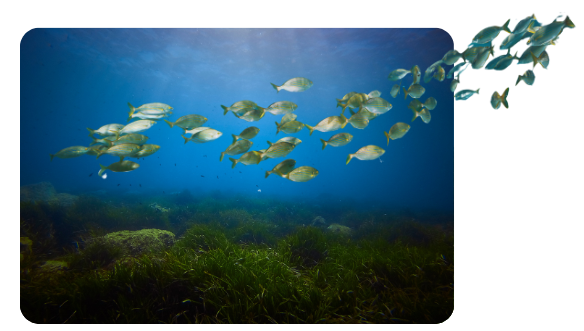Story
Identifying plastic hotspots from space
25 April 2019
Scientists at Plymouth Marine Laboratory (PML) are using Earth observation satellites to detect patches of marine debris, using a new method that may allow them to distinguish between natural and human-made sources of floating materials, including plastics.

Macroplastics such as water bottles, packaging and plastic bags pose a significant threat to marine organisms and ecosystems, as highlighted in the recent Blue Planet II series. They can be ingested or entangled and, if not removed from the marine system, will eventually break down into microplastics. Being able to detect hotspots of marine litter may help us to better understand sources, trends and patterns of plastic pollution in our vulnerable marine environment. Information may even be used for clean-up operations in coastal waters, to complement river and beach clean-up activities.
The Sentinel-2A and B optical Earth observation satellites, owned by the European Copernicus programme and operated by the European Space Agency (ESA), collect data over land and coastal waters every 2-5 days at 10m resolution. This high spatial resolution of their multi-spectral instrument (MSI) sensors allows for detection of small objects such as boats and individual wind turbines around the coast. Scientists at PML are now showing that floating seaweed and debris can also be “seen’ by these satellites along river plumes, fronts or eddies, which tend to group floating materials into patches.
The difficulty comes in distinguishing between patches of plastics and natural debris, such as seaweed and other plant materials. PML scientists Dr Lauren Biermann and Dr Victor Martinez-Vicente developed a Floating Debris Index, which was then tested on patches of Sargassum seaweed and floating plastic targets to create a reference model.

Dr Lauren Biermann presenting at the European Geosciences Union Conference
Their technique was then applied to several different coastal locations. At the European Geosciences Union conference, Dr Biermann presented two such case studies, including along the east coast of Scotland, where the Marine Conservation Society found a 14% increase of litter since 2017. Using the floating debris index, materials were detected along a front outside the Firth of Forth, and appeared to be dominated by non-plant material. The second case study focused on waters around the San Juan Islands of British Columbia. Previous in situ studies have shown that these waters have persistent, high levels of marine litter, and detections south of Gabriola Island showed aggregations of plant materials mixed with non-plant materials.
The optical “signature’ of detected materials was specific enough that researchers could eliminate false detections from buoys, small boats and foam on the water. However, there is still uncertainty relating to exactly what detected patches are composed of, and this highlights the need for more in situ validation data.
Dr Biermann said “Being able to differentiate patches of floating material by satellite may help us to tackle some open questions about where macroplastics congregate and where they come from.”
This work falls under the European Space Agency funded project, OPTIMAL, and travel to EGU was possible thanks to Natural Environment Research Council (NERC) funding under the JaSS project, led by PML’s Dr Sevrine Sailley.
